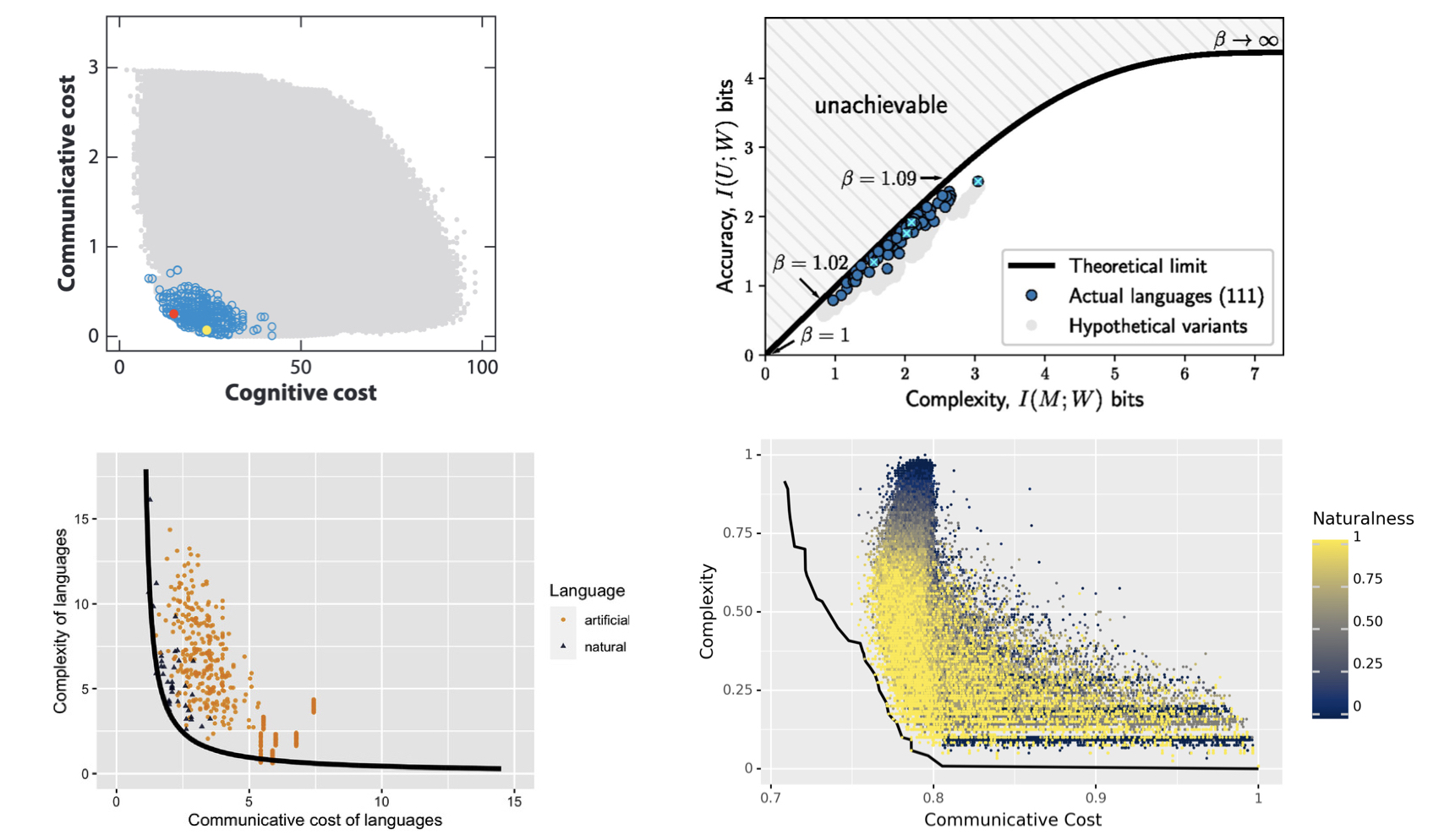The Unnatural Language ToolKit (ULTK)

Introduction
ULTK is a software library that aims to support efficient communication analyses of natural language. This is a line of research that aims to explain why natural languages have the structure that they do in terms competing pressures to minimize cognitive complexity and maximize communicative accuracy.
Key features:
- Primitives for constructing semantic spaces, expressions, and languages
- Tools for measuring informativity of languages, communicative success of RSA speakers and listeners
- Language population sampling and optimization w.r.t Pareto fronts
- Rate-Distortion and Information Bottleneck style analyses
ULTK is a long term project and it is currently in its early stages. It is intended to help lower the barrier to entry for certain research in computational semantics, and to unify methodologies. If you find something confusing, please open an issue. If you have a phenomena of interest in linguistic semantics that you want to run an efficient communication analysis on, please contact the contributors.
Read the documentation.
Installing ULTK
First, set up a virtual environment (e.g. via miniconda, conda create -n ultk python=3.11, and conda activate ultk).
-
Download or clone this repository and navigate to the root folder.
-
Install ULTK (We recommend doing this inside a virtual environment)
pip install -e .
Getting started
- Check out the examples, starting with a basic signaling game. The examples folder also contains a simiple efficient communication analysis of indefinites.
- To see more scaled up usage examples, visit the codebase for an efficient communication analysis of modals or sim-max games.
- For an introduction to efficient communication research, here is a survey paper of the field.
- For an introduction to the RSA framework, see this online textbook.
Modules
There are two modules. The first is ultk.effcomm, which includes methods for measuring informativity of languages and/or communicative success of Rational Speech Act agents, and for language population sampling and optimization w.r.t Pareto fronts.
The second module is ultk.language, which contains primitives for constructing semantic spaces, expressions, and languages. It also has a grammar module which can be used for building expressions in a Language of Thought and measuring complexity in terms of minimum description length, as well as for natural language syntax.
The source code is available on github here.
Testing
Unit tests are written in pytest and executed via running pytest in the src/tests folder.